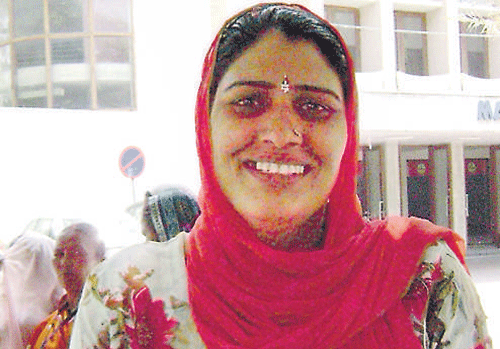Sushma Bhadu might be a class seven dropout, but has put an end to female foeticide and ensure free primary education to all girls in her village, finds out Bula Devi.
In a state that is known to reject the girl child, Sushma Bhadu has managed to make her village of Dhani Miyan Khan, a ‘model’ when it comes to women’s rights and the survival of daughters. Sushma Bhadu is one of those progressive women from rural Haryana who has chosen her own future by entering public life. Elected in 2010 as the sarpanch of the Dhani Miyan Gram Panchayat in Fatehabad district, she has proven to be a true revolutionary.
Clever move
To put an end to the inhuman practice of female foeticide, this feisty leader announced a handsome cash reward of Rs 51,000 for informers who provide tip-offs on those seeking and conducting sex determination tests and backroom abortions. In addition, she instructed the local anganwadi and other health workers to remain alert and immediately intimate the panchayat in case any such incident came to light. As a result of this approach, even though Haryana in general presents a bleak picture when it comes to the female sex ratio, “focused efforts in Dhani Miyan Khan have produced excellent results. The village has 426 females to 416 males”, informs Bhadu.
For every girl
At the same time the leader has taken on the charge of educating local girls very seriously. Though a class seven dropout herself, she is determined to ensure that no child in her area remains illiterate. Under her leadership, the panchayat has started covering the fees as well as expenses incurred on uniforms and books for girl students up to Class Five for those parents who cannot afford to support their daughters’ schooling.
The outcome of this move has already started yielding results. “Every family wants educated, qualified daughters-in-law. So I try to explain to them that if they don’t send their own daughters to school, their sons will not get educated wives,” says Bhadu, in a matter-of-fact manner.
Breaking shackles
While she may not have undergone formal education, the leader does have experience and vision that have enabled her to draw up a road map for the girls of the community. Elaborates Bhadu, “I hold meetings with parents, mostly mothers, in small groups and try to explain to them that if they do not educate their daughters, their fate, too, will be sealed like them and the vicious cycle of struggle for survival will continue for generations together. Their daughters will remain shackled by household work.”
Despite belonging to the conservative Bishnoi community that does not allow its womenfolk to move around without the ‘ghunghat ‘(veil to cover their face), Bhadu has broken conventions to exercise her rights as a progressive woman. She discarded the veil as she found it an obstruction to her work and her initiative has given other women the confidence to shun this age-old practice that is extremely restrictive.
Empowering vocationally
One major factor that has helped her village to script such tremendous success stories is the panchayat leader’s constant endeavour at advocacy and information dissemination in the community.
Under Bhadu’s stewardship, a tailoring centre has been set up where women gain vocational training and she has arranged funding from a bank to sponsor these women as they set out to be entrepreneurs.
Bhadu’s work for women’s emancipation and empowerment in Dhani Miyan recently brought her the Outstanding Women Leaders Panchayat Award, instituted by the Institute of Social Sciences.
Young or old, educated or illiterate, savvy or simple – local self governments in India have thrown up some real-life political heroines, who have worked hard to make the lives of their communities better.
Displaying remarkable skills, they have emerged as architects of change and empowerment at the grassroots.
Bhadu is just one such example of a woman’s leadership helping communities make a transition from stagnation to change.
